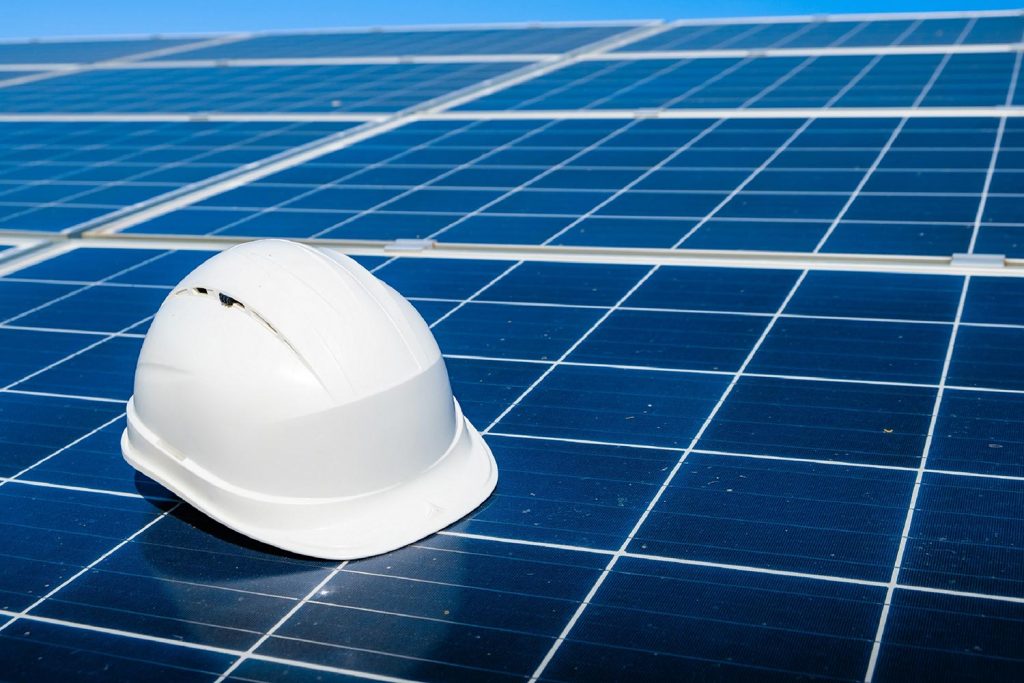Also called a photocell or photocell, a photovoltaic cell is an electronic device made of materials that exhibit a photoelectric effect, i.e. absorb photons of light and emit electrons. This material is usually silicon. When the photons are captured by a contact grid and guided by binding to other solar cells, the result is an electric current that can be used as electricity.
Solar energy is on the rise, with the number of solar panels manufactured and installed increasing every year. It is a clean and renewable energy, and because it is cheap to maintain after the initial installation, more and more families and businesses are opting to use it, but how exactly does it work?
In this article we explain what a photoelectric cell is and how it works to provide us with electricity.
What is a photovoltaic cell?
A photocell is the basic unit that makes up a solar panel. Solar panels are made up of these devices that can transform light energy into electricity through the photovoltaic effect. When we speak of a photovoltaic cell, we refer to it as part of a solar panel composed of a certain number of photovoltaic cells.
Photovoltaic cells produce an electric current proportional to the surface area and quality of each cell. Therefore, they are put together to form a photovoltaic solar panel, which provides a more compact and rigid structure and makes it easier to produce the minimum amount of electricity needed to create a direct current.
Types of photovoltaic cells
- Amorphous silicon cells: These are the cheapest but also the least efficient of all. Because of this and because they do not require direct exposure to perpendicular solar radiation, these cells are used in small devices such as calculators or watches.
- Monocrystalline silicon cells: these consist of a single, thinly laminated silicon crystal and are characterised by their uniform blue colour. Being the most advanced, they are more expensive to manufacture than the others but also provide superior performance under certain conditions.
- Polycrystalline silicon cells: like polycrystalline silicon cells, they are also blue in colour, although not uniform. They are made up of several crystals rather than a single sheet, so they have somewhat lower efficiency than monocrystalline silicon cells.
Silicon and solar energy
Photovoltaic cells consist of sand transformed into extremely pure silicon crystals. One particularity of silicon that makes it a suitable material for the construction of solar panels is that it is semi-conductive. Silicon is photoconductive, which means that its electrical conductivity increases when it is exposed to light. It is able to absorb photons of light and emit electrons through the photoelectric effect.
The radiation absorbed by each cell causes electrons to jump from one layer to another and electrical energy is generated. The sun's rays are made up of particles called photons, which are what alter the material and start the photovoltaic effect. The energy produced by the photons is intended to free the electron from the atom, as once it is free it can move through the material and be used as electrical energy. In this process, materials such as silicon acquire conductivity.
Efficiency of photovoltaic cells
The theoretical efficiency limit is 29.4%, and today the efficiency of photocells is around 20%. Experts are still working and researching to improve performance, and so far, the Fraunhofer ISE laboratory has managed to achieve an efficiency of 22.3%, the highest ever.
The researchers are even working to exceed the theoretical limit by combining silicon with other semiconductor materials and compounds such as gallium arsenide.


